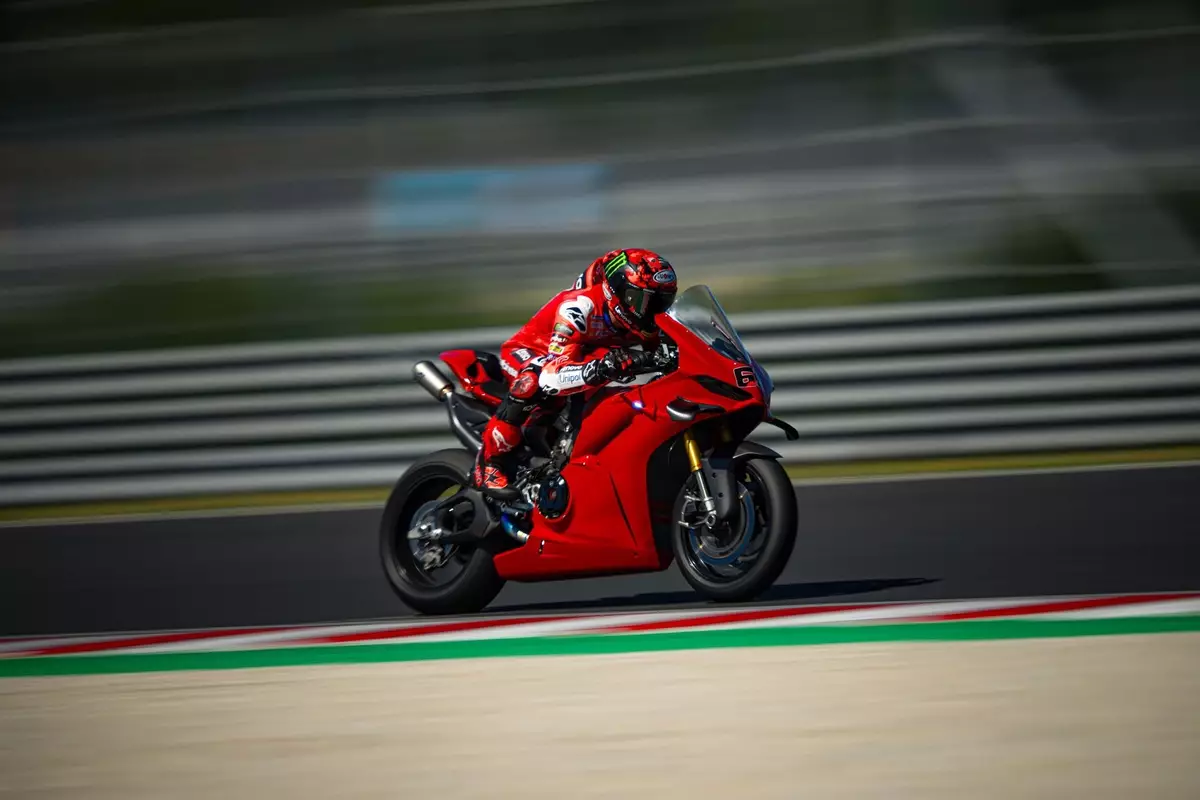The upcoming Hungarian Grand Prix marks a pivotal milestone in the motorcycle racing calendar—not only because of its return after a 33-year hiatus but also due to the triumph of strategic preparation exemplified by Ducati. In an era where teams chase every fractional advantage, Ducati’s meticulous approach exemplifies the depth of commitment required for victory. Sending seven of its top riders and a cadre of technicians to the untested Balaton Park circuit weeks before race day demonstrates a level of foresight that transcends conventional testing protocols. It’s a testament to Ducati’s unwavering pursuit of excellence, emphasizing that success in MotoGP is as much about behind-the-scenes diligence as it is about raw speed on race day.
The choice to familiarize themselves with a new, relatively undisturbed track underscores Ducati’s understanding of racecraft’s nuances—each corner, each straight, influences how a bike must be set up and how a rider’s style must adapt. This proactive strategy highlights a philosophy where understanding the unfamiliar becomes instrumental to dominating the unfamiliar. In doing so, Ducati not only prepares its riders physically but also mentally, fostering confidence that will be vital during the grueling MotoGP encounters.
Leveraging Road-Style Machines for Race-Ready Insights
What sets Ducati’s approach apart is its use of the Panigale V4 S Pro as a stand-in for race simulations. The V4, famed for its track-ready pedigree and derivation from WorldSBK machines, acts as a bridge connecting street prowess with racing needs. By equipping these machines with over €10,000 worth of enhancements—specifically tuned brakes and suspension—the Italian manufacturer blurs the line between street and circuit. This tactical move permits their riders to experience the track using equipment that, while not fully sanctioned race bikes, closely mimics the behavior and handling characteristics of their competitive machinery.
The significance lies in the fact that Ducati’s engineers aren’t merely seeking comfort or familiarity with the track; they’re methodically honing team and rider synergy. From fine-tuning brake responses to suspension behavior suited for Balaton’s peculiarities, Ducati is effectively pre-conditioning its riders. This preemptive work allows for rapid adaptation once they switch to the Desmosedici GP, ensuring that the day one setup is not a shot in the dark but a calculated precision shot based on thorough, real-world data.
Riders’ Perspectives: Confidence Gained and Racing Readiness Confirmed
The human element—the riders’ feedback—is a vital piece of Ducati’s strategic puzzle. Pecco Bagnaia’s enthusiasm reflects a broader sense of readiness and a positive outlook on the new circuit’s challenge. His comments reveal a rider who appreciates the circuit’s tight, technical layout, which demands finesse rather than outright power, aligning well with Ducati’s capacity for agility and precision. The mention of “trying to drift” the Panigale V4 signals a readiness to experiment, to understand traction limits, and to gain confidence—crucial traits for race day.
Marc Marquez, legendary for his adaptation skills, echoes this sentiment, emphasizing the circuit’s “stop-and-go” nature. His enthusiasm illustrates a mental shift—viewing the unfamiliar track not as a threat but as an opportunity to decipher its rhythm and develop a tailored riding style. For a rider of Marquez’s caliber, this early familiarity accelerates confidence, translating directly into performance.
Crucially, Ducati’s focus on rider feedback shows their strategic emphasis on holistic preparation—balancing technical tweaks with rider psychology. When riders are confident and understand the track’s idiosyncrasies, their performances are inevitably more consistent and composed.
Strategic Foresight: The Power of Vigilant Preparation
The intensive pre-competition testing at Balaton underscores a broader truth in MotoGP—who prepares best often wins. Ducati’s decision to invest in this private session, despite regulations limiting rider track time close to the event, exemplifies a long-term vision. Their method is rooted in reducing uncertainty, optimizing setup, and ensuring their riders hit the ground running when the lights go out.
This approach also reflects a nuanced understanding of the circuit’s unique demands. The Hungarian track’s history offers little recent data, making Ducati’s hands-on testing invaluable. They transition from casual familiarity to meticulous calibration, which can be the difference-maker amid a tightly contested championship landscape.
By taking a disciplined, strategic stance, Ducati demonstrates that excellence isn’t accidental. It’s engineered through deliberate practice, deep technical knowledge, and an unwavering will to adapt swiftly. In the broader context, this speaks to their championship ambitions; with all three titles comfortably in hand, the Italian marque’s real goal seems to be cementing its legacy through relentless precision rather than complacency.
Finally, their proactive preparation sends a clear message: Ducati isn’t merely content with leading the championships—they aim to dominate every aspect of racing. From engine tuning to rider skill, their comprehensive, anticipatory mindset exemplifies what it takes to stay at the forefront in a sport driven by fractions of a second. As the Hungarian GP approaches, no detail is left unexamined, no opportunity unexploited. Ducati’s strategic mastery isn’t just about the race; it’s about defining the future of MotoGP dominance.


Leave a Reply